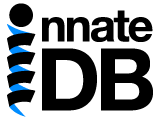| Homo sapiens Protein: NFATC2 | |||||||||||||||||||||||
|---|---|---|---|---|---|---|---|---|---|---|---|---|---|---|---|---|---|---|---|---|---|---|---|
| Summary | |||||||||||||||||||||||
| InnateDB Protein | IDBP-81225.7 | ||||||||||||||||||||||
| Last Modified | 2014-10-13 [Report errors or provide feedback] | ||||||||||||||||||||||
| Gene Symbol | NFATC2 | ||||||||||||||||||||||
| Protein Name | nuclear factor of activated T-cells, cytoplasmic, calcineurin-dependent 2 | ||||||||||||||||||||||
| Synonyms | NFAT1; NFATP; | ||||||||||||||||||||||
| Species | Homo sapiens | ||||||||||||||||||||||
| Ensembl Protein | ENSP00000360619 | ||||||||||||||||||||||
| InnateDB Gene | IDBG-81223 (NFATC2) | ||||||||||||||||||||||
| Protein Structure |

|
||||||||||||||||||||||
| UniProt Annotation | |||||||||||||||||||||||
| Function | Plays a role in the inducible expression of cytokine genes in T-cells, especially in the induction of the IL-2, IL-3, IL-4, TNF-alpha or GM-CSF. Promotes invasive migration through the activation of GPC6 expression and WNT5A signaling pathway. {ECO:0000269PubMed:21871017}. | ||||||||||||||||||||||
| Subcellular Localization | Cytoplasm. Nucleus. Note=Cytoplasmic for the phosphorylated form and nuclear after activation that is controlled by calcineurin-mediated dephosphorylation. Rapid nuclear exit of NFATC is thought to be one mechanism by which cells distinguish between sustained and transient calcium signals. The subcellular localization of NFATC plays a key role in the regulation of gene transcription. | ||||||||||||||||||||||
| Disease Associations | |||||||||||||||||||||||
| Tissue Specificity | Expressed in thymus, spleen, heart, testis, brain, placenta, muscle and pancreas. Isoform 1 is highly expressed in the small intestine, heart, testis, prostate, thymus, placenta and thyroid. Isoform 3 is highly expressed in stomach, uterus, placenta, trachea and thyroid. {ECO:0000269PubMed:8668213}. | ||||||||||||||||||||||
| Comments | |||||||||||||||||||||||
| Interactions | |||||||||||||||||||||||
| Number of Interactions |
This gene and/or its encoded proteins are associated with 61 experimentally validated interaction(s) in this database.
They are also associated with 18 interaction(s) predicted by orthology.
|
||||||||||||||||||||||
| Gene Ontology | |||||||||||||||||||||||
Molecular Function |
|
||||||||||||||||||||||
| Biological Process |
|
||||||||||||||||||||||
| Cellular Component |
|
||||||||||||||||||||||
| Protein Structure and Domains | |||||||||||||||||||||||
| PDB ID | |||||||||||||||||||||||
| InterPro |
IPR002909
IPT domain IPR008366 Nuclear factor of activated T cells (NFAT) IPR008967 p53-like transcription factor, DNA-binding IPR011539 Rel homology domain IPR014756 Immunoglobulin E-set |
||||||||||||||||||||||
| PFAM |
PF01833
PF00554 |
||||||||||||||||||||||
| PRINTS |
PR01789
|
||||||||||||||||||||||
| PIRSF | |||||||||||||||||||||||
| SMART |
SM00429
|
||||||||||||||||||||||
| TIGRFAMs | |||||||||||||||||||||||
| Post-translational Modifications | |||||||||||||||||||||||
| Modification | |||||||||||||||||||||||
| Cross-References | |||||||||||||||||||||||
| SwissProt | Q13469 | ||||||||||||||||||||||
| PhosphoSite | PhosphoSite-Q13469 | ||||||||||||||||||||||
| TrEMBL | B5B2P0 | ||||||||||||||||||||||
| UniProt Splice Variant | |||||||||||||||||||||||
| Entrez Gene | 4773 | ||||||||||||||||||||||
| UniGene | Hs.356321 | ||||||||||||||||||||||
| RefSeq | NP_036472 | ||||||||||||||||||||||
| HUGO | HGNC:7776 | ||||||||||||||||||||||
| OMIM | 600490 | ||||||||||||||||||||||
| CCDS | CCDS33488 | ||||||||||||||||||||||
| HPRD | 02730 | ||||||||||||||||||||||
| IMGT | |||||||||||||||||||||||
| EMBL | AL035682 AL035684 AL132866 BC136418 BC144074 CH471077 EU887573 EU887574 EU887575 EU887576 EU887577 EU887578 U43341 U43342 | ||||||||||||||||||||||
| GenPept | AAC50886 AAC50887 AAI36419 AAI44075 ACG55593 ACG55594 ACG55595 ACG55596 ACG55597 ACG55598 CAC00528 CAI18852 CAI18853 CAI19205 CAI19206 CAI23549 EAW75602 EAW75603 | ||||||||||||||||||||||
